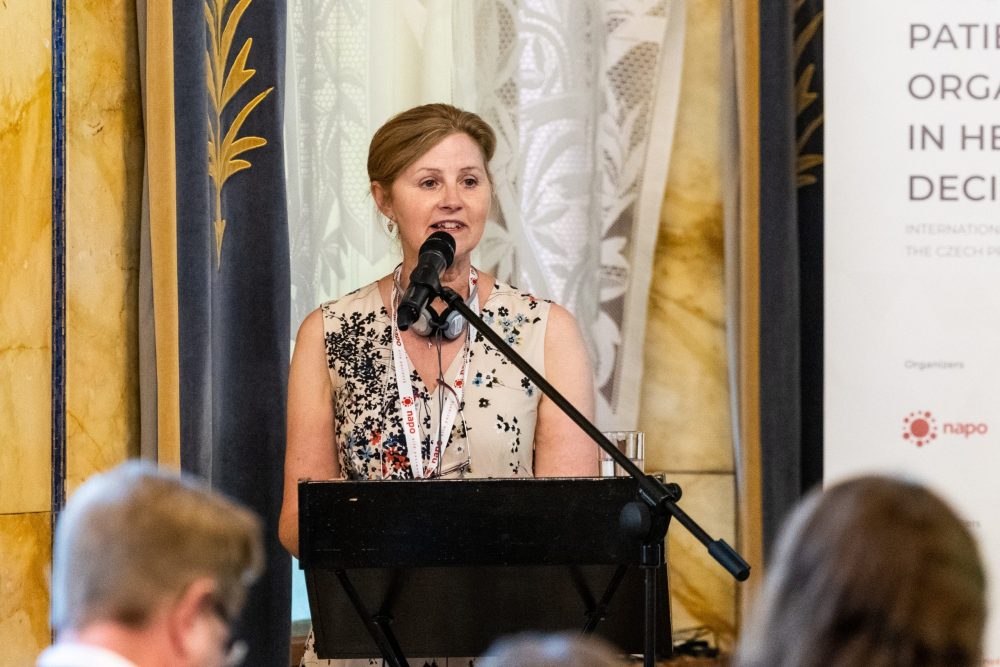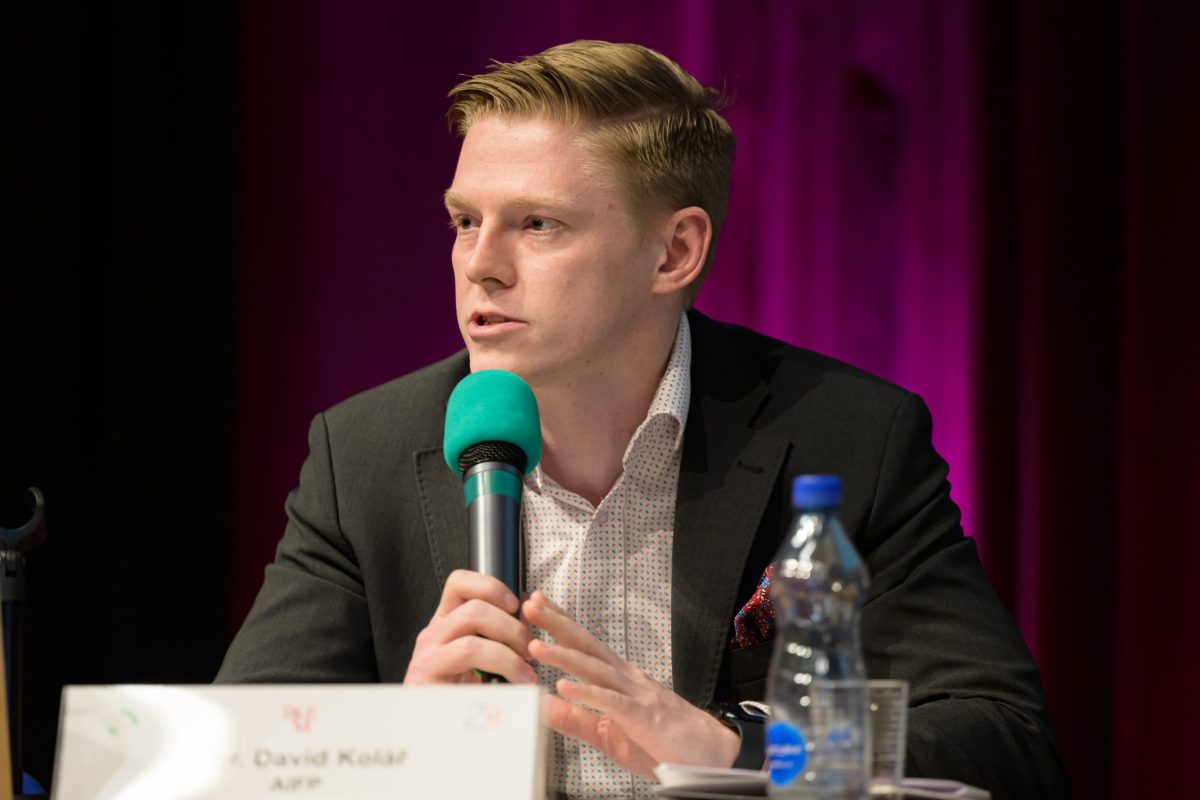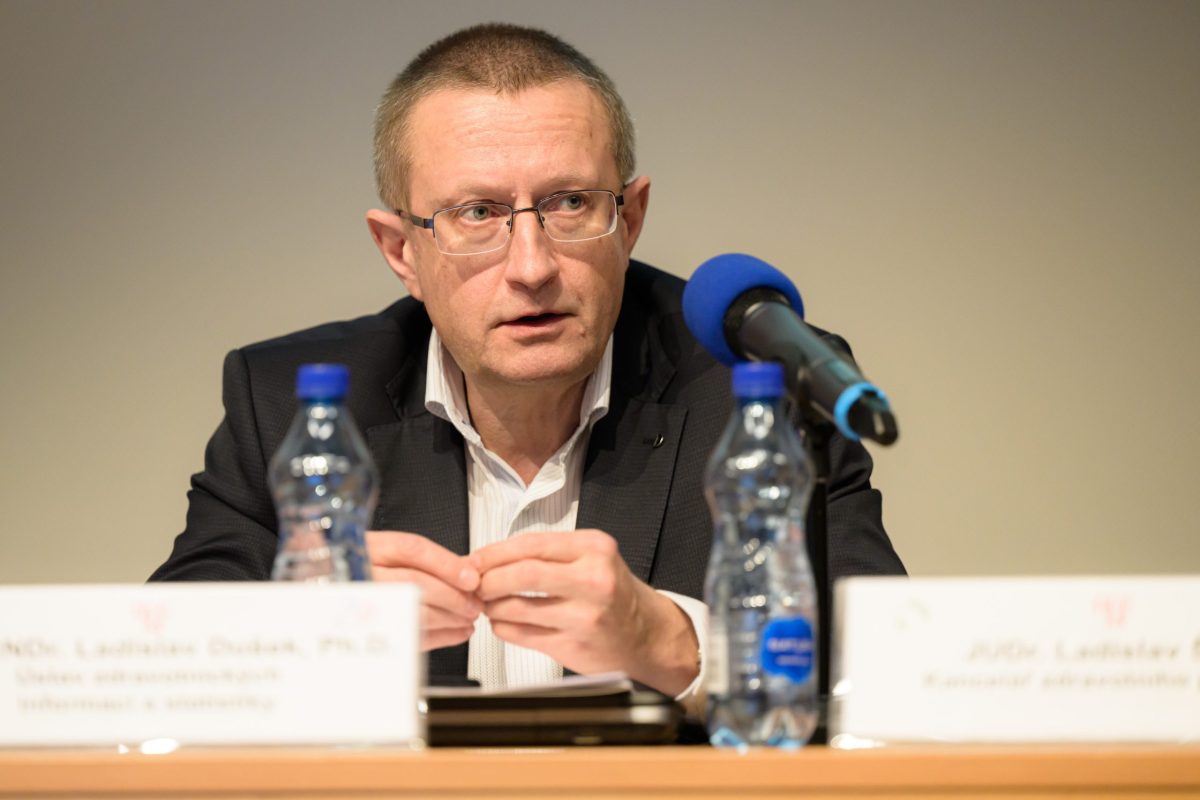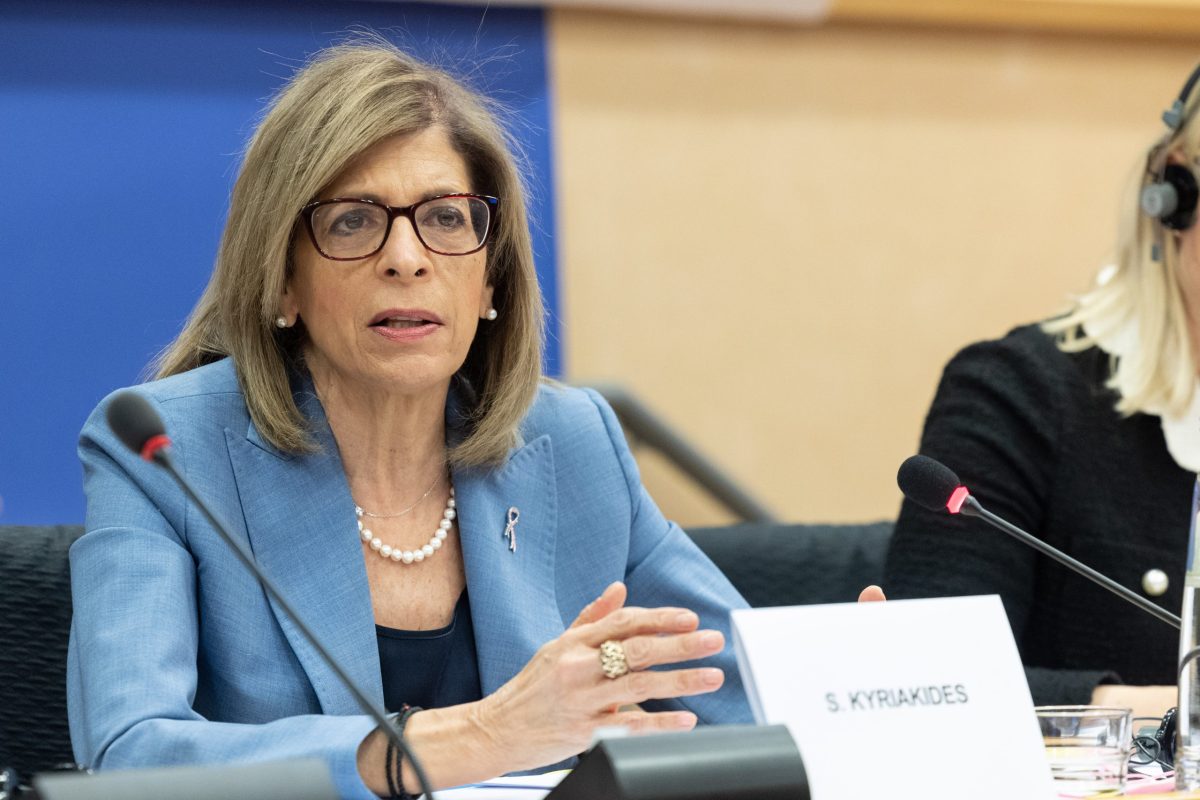Patient organisations should play an important role in the process of assessment of new innovative therapies. However, it is no easy task for them as well – they need to convince other stakeholders that they represent a wide range of patient views and understand the complexities of healthcare systems. Yet, a patient voice in HTA is of no use unless it’s going to make a difference, says Senior Research Fellow and expert on HTA and patient involvement Karen Facey from the University of Edinburgh. And she praises the Czech Republic for involving patients in the assessment and appraisal of medicinal products on rare diseases and the Czech ministry of health for creating a department for patient rights. “It is unique,” says Facey in an interview with Zdravotnictví deník which tool place during the international conference on rare diseases in Brussels.
You once said that patients can help us fill the gaps in the scientific evidence. In what way can scientific evidence be insufficient during the development of a treatment?
If we focus particularly on rare diseases, we know that there is paucity of clinical knowledge about how to treat these patients. So there are lots of gaps in terms of what is the best pathway of care, what is the best standard of care. But most importantly, what outcomes matter to patients. If we look at cardiology, we have studies that tell us that blood pressure is important and we can measure blood pressure. If we are studying spinal muscular atrophy or Duchenne muscular dystrophy, we might use an assessment like a 6-minute-walk test or a muscular evaluation. But actually, that’s not what matters to patients.
When they have the treatment, they often say to us: OK, my 6-minute-walk test only improved by three minutes, but actually that means I can now go to the bathroom myself. So they help us understand what’s important and what the real impact of the condition and of a treatment is. And so our understanding about how to measure the impact of a treatment evolves.
We need to know patient experience in different phases of research and development
So patients have an important role in both the development and HTA processes. Which is the moment when they should be involved in it, who should involve them?
The first step is with the industry. The industry needs to engage with patients before they start developing any product in a particular area to understand what the unmet needs are. Then in the design of the clinical trial to make sure that they’re measuring the outcomes that matter and capturing experiences that may complement the measured outcomes.
Mohlo by vás zajímat
When it comes to the determination of value, which is undertaken by a pricing and reimbursement authority, I think that patients should be involved in the assessment of evidence. This is really important, because we may see a statistically significant change in an outcome, but we don’t know what that means for patients, what difference is that making and if that means that a patient does not require a carer anymore to help them get up in the morning. So we need those patient experiences to be heard at that point so that we understand what the evidence is telling us.
A particular area where there are new developments in patient involvement, is in the process of creating an economic model of value. Many countries like the Czech Republic, or the UK, base their decisions on value for money, on cost per quality-adjusted life-years. Modelling is based on the way a patient progresses through various stages of a disease. Sometimes the way in which industry has modelled that can be totally inappropriate. And we need patients to call out and say: Actually, that’s not a good model of value. You shouldn’t be using it for your decision making.
So I think we need to hear patient experiences at a variety points from designing clinical trials and realistic economic models to helping interpret value. Notice, I don’t refer to the patient voice because there are a wide range of patients who have different experiences and we need to try and bring in that diversity. If patient groups can do that, that provides credibility from a decision maker´s point of view.
As you describe it, that might be a challenge as regards the flexibility of the otherwise rather strict HTA process.
Again, it’s about that early involvement. Ideally, what an HTA body should be doing is saying to the developer: How have you developed your economic model? Is it a good representation of the disease? How have you involved patients (and clinicians) in its development?
Some HTA systems have documented processes that provide flexibility in decision-making for certain conditions such as rare diseases or cancer or treatments for those at the end of life. In other countries, there may be flexibility applied that arises when discussing the available evidence for a specific case, e.g. if it is for a very severe disease, or a disease that is life limiting to children. Naturally, all this cannot be written down. So I think some of it can be process-driven, but you do need some additional flexibility for the trade-offs that are discussed in the deliberative appraisal process . Otherwise, you’re just putting people into a box. But every medicine is different.
Pacient organisation need to be a true representative of its community
What “kind” of a patient should be involved – patients organisations only or individual patients as well? Are there any general criteria for it?
I believe that it is patient organizations rather than individual patients that should be involved more in these processes. There can be huge challenges for individual patients or their carers hearing some of the discussions about value, which are very often economically driven. For these they need expertise and understanding to be able to contribute with credibility.
Therefore, we should be focusing on training patient organizations to be true representatives of the whole patient community. So that they bring together information that shows they have engaged with the community about the key questions in the HTA and be able to show a diversity of views. Actually, often the most interesting information that comes from patients can be identifying where there’s a real unmet need, for example, where the pathway of care is not working for a particular subgroup of patients or in a particular region as healthcare can be given differently in different regions.
So patient organisations should make sure that they represent a good network of patients within the health system.
For me that’s the most important point of credibility about a patient organization. We should be encouraging patient groups to be honest about the value of the medicine and not just advocate for the medicine, because then the decision makers get concerned that they are “biased”. They say: These patient organizations just keep asking for the next new drug, which is really expensive, e.g. €2 million for the next gene therapy, if we spend on this, we can’t spend on many other services for many patients. So we need patient organizations who understand the challenges of the health system and who help present the best information about the product: who is it working for, what difference is it really making, who has stopped having the treatment and why, did he or she have severe side effects?
Often they are real experts
Building confidence in a patient organization to gather a variety of views and present them to the decision maker in as balanced manner as possible is no easy task. You said it requires some training. Who should provide that?
Provision of education, I think, is the responsibility of decision makers, to explain how their decisions are made and where exactly patient input could make a difference. They should also support it financially. Not just in terms of training programmes but also providing staff whose role is to support that patient engagement. And here I just have to applaud the Czech ministry of health and its Patient Support Department. Honestly, it is a flagship.
In what way?
I do not know of any other country that has such a department at the ministry level. It is unique to be employing people who have conditions themselves and who have patient group experience and who are trying their best to ensure that patients and their representatives are involved in a wide range of policy level deliberations about health care. It’s really astounding. They explain to patient groups that if they are purely advocates, it’s quite hard for decision makers to listen to them. However, if they come with a balanced view, it is much more helpful. So I would really want to highlight such patient support.
So basically, it is the HTA who should create an environment for patients to be trained in this way and become credible?
Well, not only, we may think European-wide as well. EURORDIS has great training programs which are free for patient organizations. Then there is EUPATI, European Patients’ Academy on Therapeutic Innovation. These can provide very detailed training.
Should these patient organisation be financially supported and how?
This is a big issue. And much more challenging in Central and Eastern European countries because in Western European countries, there is a lot more voluntary contribution from society. But frankly, no country around the world has solved it, yet. Canada has been working on it, but no ministry is really funding patient organization. On the other hand, they’re expecting a lot from them. Therefore, I think we should be at least funding individual activities. If you’re asking a patient to come to a meeting, or to make a submission of evidence, you should pay for that specific piece of work as you would pay a doctor, for example. We need fairness here. They are volunteers and if you don’t provide resources they will have to look to other stakeholders, such as individual companies, which can create a conflict of interest.
And there is also this issue of capacities because we talk about patients with sometimes severe conditions and their carers, usually family, who have much work with them.
That’s why the patient organizations are so important. They are representatives of both the patients and carers who can present the diversity of views. And they include many amazing professionals: lawyers, doctors, economists. Czech NAPO is led by an economist. What we often see is that the people that take on the leadership in these societies and organizations are usually those that have the expertise to do it. So we shouldn’t just demean patient organizations by assuming they are “patients” and they know nothing about the complex issues being discussed. We need to recognize the expertise that their representatives have. Just look at Yann Le Cam, CEO of Eurordis. He has many years of experience and he works with a wide range of individuals.
New HTA regulation is a disappointment
Let´s now have a look at patient engagement at the EU level. The new HTA regulation allows for inviting patients to the table as a third party. Is it sufficient? Will it work in practice?
Actually, what seems to be currently planned is a huge disappointment. Prior to this, we had three Joint Actions of Member States in the European Network for HTA. They started from zero patient involvement and, in the end, developed patient involvement processes which included interviewing patients, getting patient organizations to submit information, learning from international best practice, taking feedback and developing that further. The HTA Regulation seems much more limited. So rather than learning from that experience, it only says patients will be involved in the assessment of individual medicines. With patient groups involved in development of methods and policies. To me that’s a huge step backwards. There is so much more that could be done. A number of us are now lobbying for it to be improved. We have to see what will happen during implementation.
Why did it happen?
Germany is a major influence in the approach, and their practice has been not to engage with patient organizations. They have a very strict approach about conflicts of interest. They have “self-help” groups and a broad advisory network of individual patients which they draw in for each assessment. They can commission research to understand patients’ issues. Their process works for them because they are investing in developing patient-based evidence. But that bit isn’t being done at the EU level. So we’ve lost something because of that concern about the conflict of interest of patient organizations.
In general, what it the practice as regards patient engagement in other countries in Europe?
The most common method is to ask patient organizations to submit information according to a standardized template which asks for a description of the nature of the condition, experience of current treatments and expectations of new treatments (if there are patients in the country that had received it, perhaps through a clinical trial).
Some countries allow patient group representatives or individual patients to come and sit at the decision-making table, either as observers or to present information, or to respond to questions and ask their own questions. Not so many countries do that, though.
We are also seeing some novel approaches being developed whereby countries are commissioning workshops or focus groups with patients or carers, particularly for more novel technologies. For example, in Wales we were looking at a particular intervention to support carers of patients with Alzheimer and it wasn’t obvious how we would do that. So we brought the carers together and supported the patient group to run a focus group with carers . The HTA body was thus working with a patient organization to develop the evidence that the decision maker needed. In the end, a full report was written which was a part of the decision making alongside the manufacturer’s dossier of evidence and the researchers´ critical review of that evidence.
I’ve been in this field now for 22 years and patient involvement in HTA continues to evolve.
So in those 22 years, what has been the major development as regards patient involvement?
We have seen increased professionalism of patient organizations recognizing that contributing to these discussions about access to medicines is key. And development of training programs and recognizing the need to develop capacities.
We’ve seen Member States learning from each other and their ways of involving patients. In the Czech Republic, Jakub Dvořáček, the then executive director of AIFP (today, a deputy health minister), made a great difference. In 2014 he asked me to come to talk to the medical society about HTA and I also talked about patient involvement. Jakub immediately picked up this issue and then every year after that I was invited back with colleagues from other countries to describe patient involvement processes. That was one of the aspects that led to the new HTA process for OMPs that now includes patients.
So I’ve seen Member States try new processes, learn from others and take feedback from their stakeholders to continually refine approaches. Not every Member State is involving patients but I see progress across Member States and I see continued learning and reflection.
A patient voice in HTA is of no use unless it’s going to make a difference. It should have an impact in the decision making and that’s where we’re now refining the engagement. How do we create it to be most valued? What can we do at European level to save every patient organization working for example in spinal muscular atrophy having to create the same information?
In your presentation, you also made an appeal to industry to collaborate more with each other at a very early stage. Is it really something workable?
I mentioned project Hercules which is in the field of Duchenne muscular dystrophy. This involves about eight companies coming together who had plans to develop Duchenne products. It has been hugely successful. It was industry-funded, patient organization-led but also collaborates with academics working in the HTA field. And there was a shift in everybody. At the beginning, the academics came to these meetings very dubious about what patient groups would be able to offer. You know – we are the academics, we know what to do. But we saw a complete change. And as we talked about progression of the disease, we changed the way we modelled the progression.
How did the project start?
This only came about because a mother of a child with Duchenne muscular dystrophy worked for a pharmaceutical company which was developing a product in Duchenne and the product failed. It didn’t go into phase III but they had developed an economic model. She wanted to share that model with other companies and her company allowed her to do that. So aligning with other patient organisations, she brought together this collaboration to initiate research that would address key issues in HTA of treatments for Duchenne Muscular Dystrophy such as how we measure burden of disease, what is a good quality of life instrument. So they’ve developed a whole new quality of life instrument because they recognized that the current one isn’t available. This worked really well and I would love industry to be focusing more on this.
Helena Sedláčková
Karen Facey is a Senior Research Fellow at the University of Edinburgh. She has a PhD in statistics and worked in the pharmaceutical industry and medicines regulation before taking on the role of Chief Executive of the first national Health Technology Assessment (HTA) Agency in Scotland in 2000. For the past 19 years, Karen has had a portfolio career working internationally to develop HTA with all stakeholders. In Scotland, she spent a decade leading the development of the NHS funding formula and serving as a Non-Executive on the frontline and national NHS boards. Karen led EC-funded IMPACT HTA research to develop an appraisal framework for rare disease treatments at the University of Edinburgh, published in 2021. She is on the Steering Group of the RWE4Decisions initiative seeking to guide the development of real-world evidence for highly innovative technologies.







